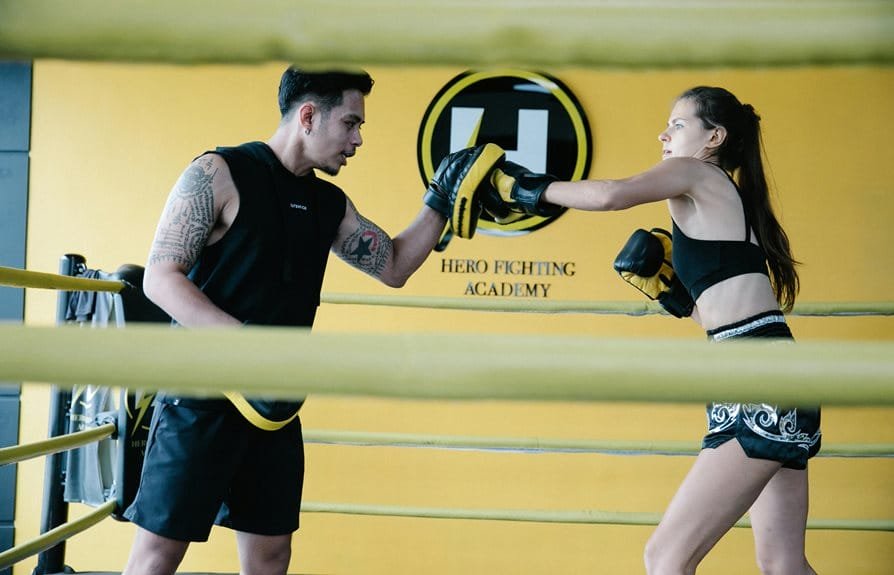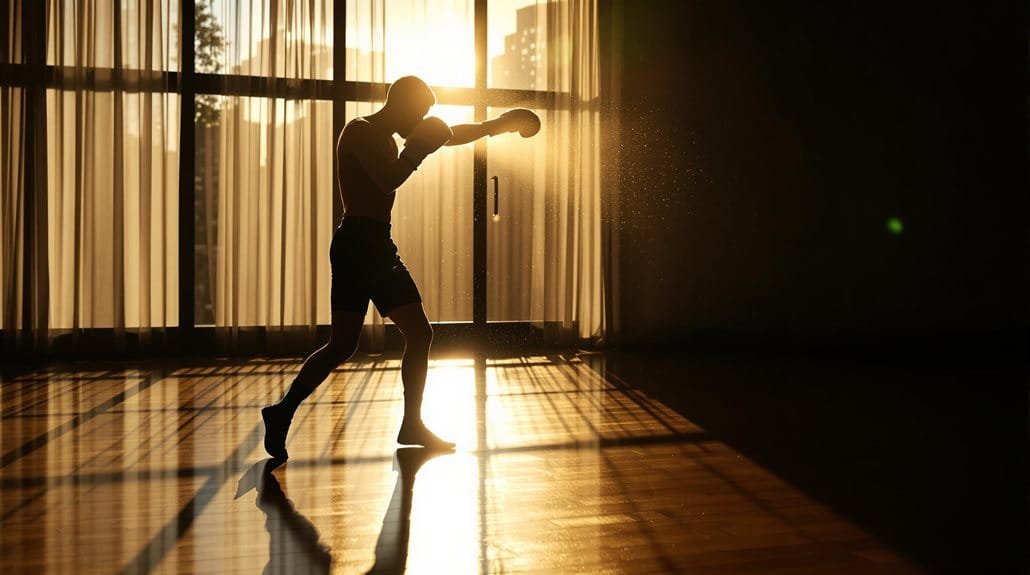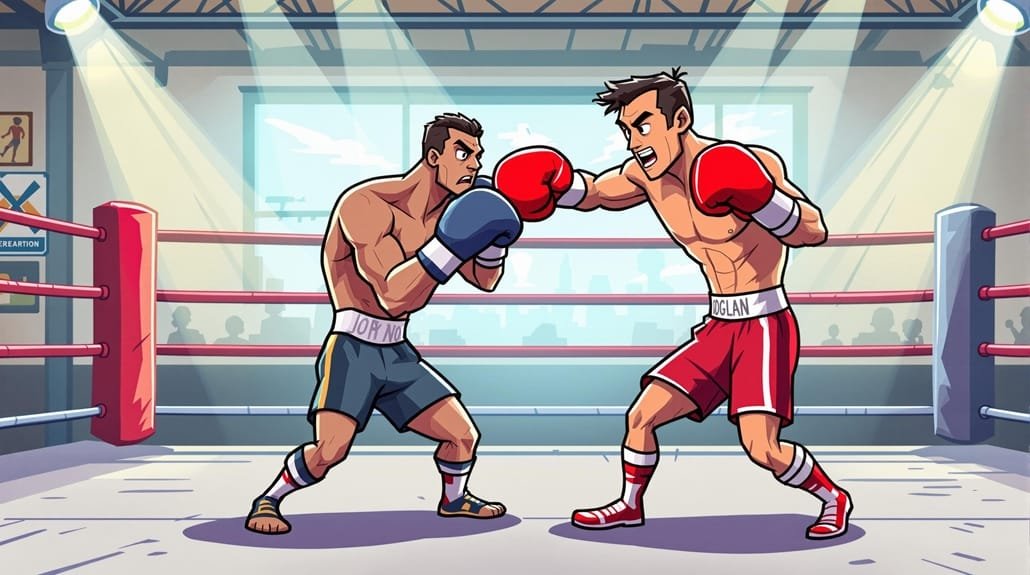This martial art has gained significant popularity across the world and most of the time, new fighters and other individuals usually ask the question: is Karate good for self defense? Do you have the same query in mind? Well, the answer to this particular question is a big YES. But, it may not be too effective if you follow the exact rules applied during the fight (like no illegal strikes). If you are utilizing rigid footwork, it would be very useful in self-defense as well as in real fights.
Are you looking for the specific techniques associated with this game, how to learn them, and where to learn from? Congratulations! You’ve come to the right resource. Let’s get deeper into the details.
Table of Contents
The Karate Fundamentals and Techniques
Among the world’s most popular martial arts, Karate holds a special place. This sport is a combination of extensive self-knowledge, accuracy or precision, discipline, and control of course. A good fighter or an expert always keeps these factors in mind before jumping into the battle ring.
Every martial art closely focuses on the fundamentals and basic techniques. The same is the case with Karate. Multiple Katas are combined to make the advanced moves of Karate. Do you know what Kata actually is? Well, it is a set of different moves arranged in a manner to help Karateka fight effectively against the opponent. If you are not familiar with the word “Karateka”, it means a Karate expert or an individual practicing this game.
The whole game of Karate revolves around four major Kihon. Aren’t you aware of what “Kihon” is? Not a problem. It is a Japanese word that means “fundamentals” or “basics”. Whenever you hear or see this word, it refers to the basic techniques to be utilized during combat. The 4 Kihon we have just talked about are:
- Stances: In Japanese, it is known as Tachikata. In simple words, it means “how to stand”
- Punches: Tsuki is their Japanese name which means “to thrust”
- Blocks: The blocks are known as Uke in the Japanese language which means “an individual who receives a strike or technique”
- Kicks: The Japanese word for Kicks is Geri which is normally referred to as a “spin kick”
Let’s go through these 4 Kihon one by one to understand their role in Karate.
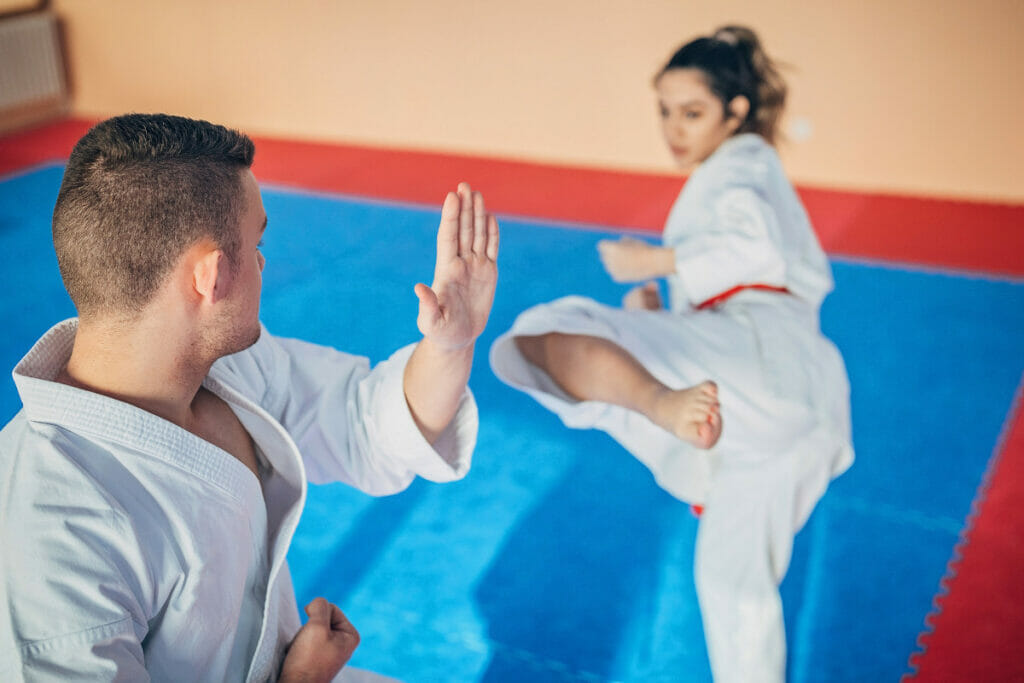
1. Stances
While striking your opponent, you need to maintain a proper balance to get fruitful results. This is where stances play their part. They have proved to be very effective in maintaining excellent balance.
If a fighter is unable to get a good stance, he or she may lose balance quickly during the combat and strikes would not be powerful enough to get the desired outcomes. This is why every Karateka must focus on improving their balancing techniques.
Are you learning Karate? The basic stances you are going to learn during your training are:
Musubi Dachi
It is the very basic or initial technique that you learn as a Karate student. For this, you need to place your feet in a way to make a “V Shape” (as shown below). You would probably be wondering why to put your feet this way. Well, it is practiced when bowing. In short, doing this is nothing but a sign of respect.
Natural Stance
In Japanese, it is known as Hachiji Dachi. It comes right after Musubi Dachi. To perform this action, your legs must be at shoulder length and your feet should be pointed forward. In addition, your arms must be held in front of your body, slightly angled. The experts suggest that your toes should be opened at 45 degrees.
Horse Riding Stance
The Japanese word for this stance is Kiba Dachi. It is common in other types of martial arts as well e.g., Muay Thai, Judo, and Kung Fu. In a horse-riding stance, your feet should be wide apart and parallel to each other. In addition, you need to keep the knees in an inward direction thereby keeping your back straight and maintaining a push-out position for your buttocks.
Front Stance
The natives call it Zenkutsu Dachi. It is considered among the most frequently used stances in Karate. To maintain this position, you need to slightly bend your back knee keeping your rear leg straight. Don’t forget to keep your back in an extended position. Your back leg should be at 45 degrees from the floor whereas the front knee must maintain an angle of 90 degrees. When it comes to the position of your front foot, it should be straight.
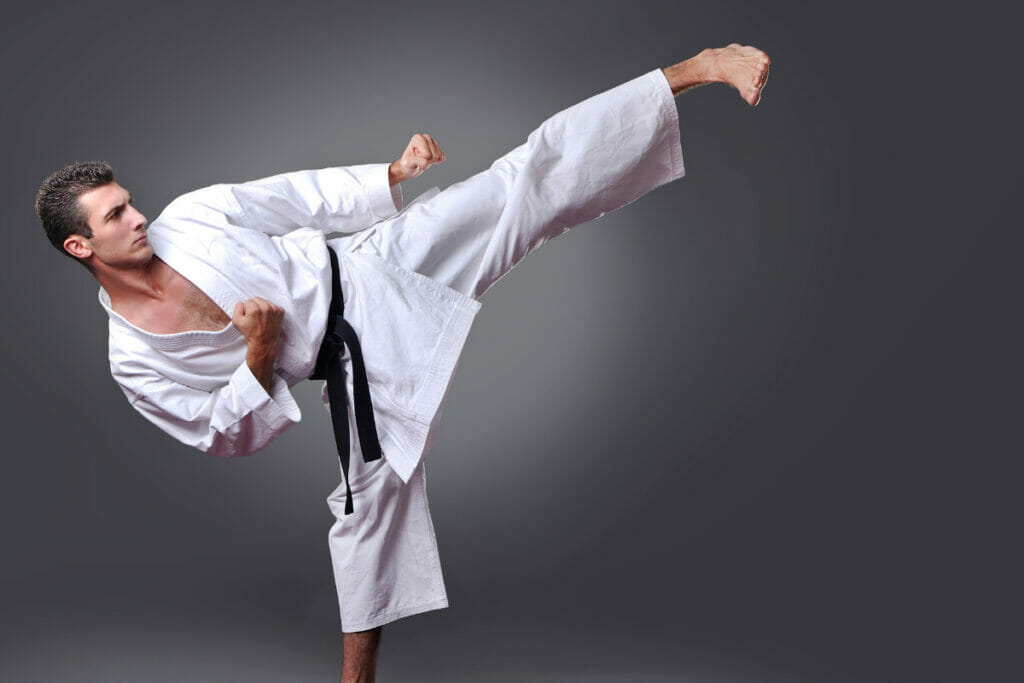
2. Punches
When it comes to punching in Karate, different types of techniques are used to implement during the combat. The most common of them are:
Reverse Punch
The Japanese call the reverse punch Gyaku Zuki. While throwing a reverse punch on your opponent, if your left leg is a leading leg, use your right hand to throw a punch. Similarly, if you are punching with your left hand, your right leg must be in front of you. In short, you can say that the punching hand and the leading leg should be on the opposite side.
Straight Punch
It is known as Choku Zuki in Japan. The natural stance position is used to throw a straight punch on your opponent. This punch holds more power compared to a jab. You need to start by making a fist. For this, fold the fingers in a way to ensure that your thumb is not under them. Now, bend the knuckles and tuck the fingers into the palm of your hand. Use your right hand to throw a straight punch with its palm upward.
Front Lunge Punch
It is known in Japanese as Oi Zuki. A Karateka executes front lunge punches using the front stance. To add more power to your strike, move your hip in a forward direction.
3. Blocks
Blocks are known as Uke in Japanese. The moves of your open hand or closed fists are usually known as blocks in Karate. But, it is not all about blocking the strikes of your opponent. You can train your feet and legs to block as well. These blocks are defensive moves you perform to keep yourself safe from the opponent’s attacks. The four different types of blocks are:
Lower Block
To maintain this position, your closed fist must be facing the body. Doing this will help you present your ribs from severe damage.
Lower block is used to defend roundhouse kicks, hook punches, and sidekicks. Lower blocks are also known as low blocks.
Upper Block
While using this technique, make a closed fist and aim it away from the face. Now, to deflect the competitor’s strike, use the forearm to block the hammer punch.
Upper blocks have proved to be very effective to block hammer punches. They are also termed as high blocks.
Outward Block
Make a tight and closed fist. Keep it away from the face. Now, to block the strike with high precision, target the inner side of the opponent’s forearm.
This technique is effective to reduce the powder of roundhouse kicks. It is also pretty useful in blocking reverse punches. You can also call outward blocks outside blocks.
Inward Block
This is a blocking position that requires you to keep your closed fist towards the face, turn the left arm towards the right, and block the competitor’s attack.
It is an effective approach to save your head from direct kicks (e.g., jabs or sidekicks). They are also referred to as inside blocks.

4. Kicks
As mentioned earlier, kicks are known as Geri in Japanese. They are, in fact, more powerful than throwing punches but at the same time, the Karate practitioners find them difficult to execute.
It is an inevitable fact that you use your hands more frequently in Karate but kicks are important too. It is, without a doubt, critical to chamber the kick both before and after you execute it. It gives a high precision to your kicking approach. Let’s take a look at some common kicks Karateka uses frequently during the combat.
Side Kick
It is called Yoko Geri in Japan. Horse riding stances are used to benefit from sidekicks. Do you want to hit your opponent with a sidekick? Turn your body sideways keeping your hips slightly over. Now, diagonally across your body, chamber the leg you want to kick with. In the end, extend your leg straight towards your target.
Front Kick
Japanese people call it Mae Geri. When it comes to kicking, the front kick is the most basic of all. Most of the trainers teach students how to benefit from front kicks in the very first training session. Maintaining a fighting distance, you can use either your back or front leg to kick your opponent. Don’t forget to chamber the kick before and after its execution.
Roundhouse Kick
Most people who watch martial arts movies get familiar with roundhouse kicks (also known as Mawashi Geri). It is one of the most powerful kicks that get the major power from your hips. While using this kick, you need to lean your back and raise one of your legs to the side (most Karateka use the left leg). Once done, make a snapping motion with your leg. Now, strike with the top of the foot. As soon as you hit your target, before lowering it down, don’t forget to chamber your kick.
Do Karate Classes Actually Teach Self-Defense?
Do you know what was the basic goal behind introducing Karate? Well, this game was precisely introduced for nothing but self-defense and personal safety. Many people get confused because they think Karate is only associated with sports fighting.
As far as Karate training classes are concerned, the martial arts trainers closely focus on improving the mental strength of every practitioner and teach them several self-defense techniques either directly or indirectly. Thousands of martial arts academies are operating to enhance this game. All of them keep a close eye on boosting self-defense abilities.
Preparing for the combat, you need proper guidance on several techniques and when to utilize them to win the title in the end. If the trainers or professionals are not teaching you these methods appropriately, you will not be able to present a good fight in the ring.
Important Note: Learning a pure martial art is different from learning self-defense approaches alone. Therefore, if you have just joined Karate classes to boost your self-defense skills, don’t forget to ensure that your instructor is well aware of your intention and you are being trained for that.
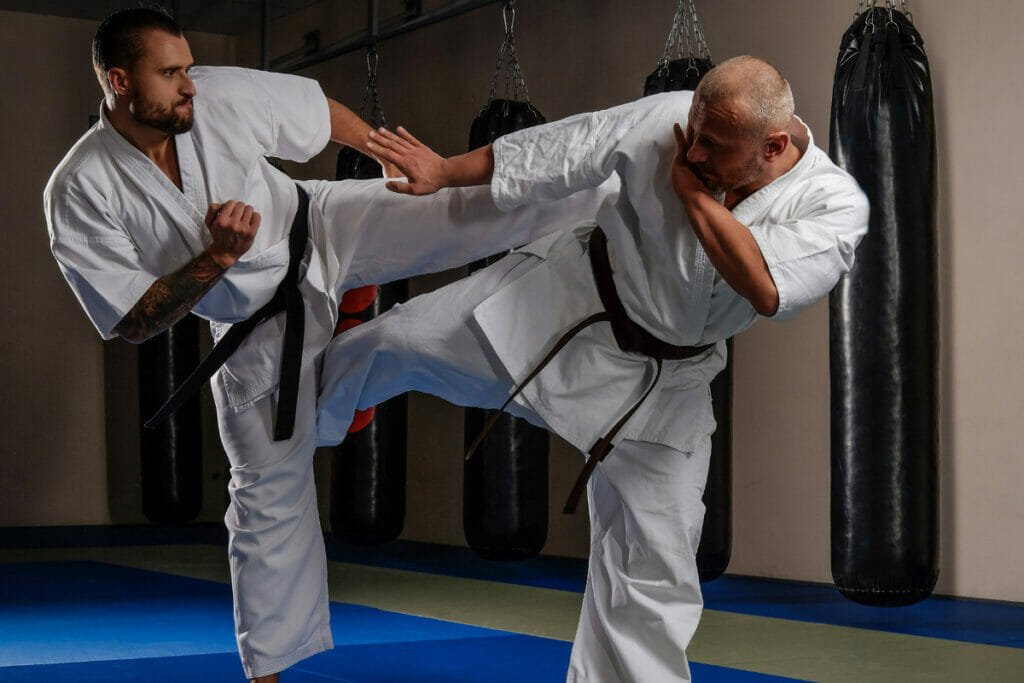
Is Karate Effective for Self Defense?
Yes, Karate is one of the most reputed sports being practiced around the world and is considered effective for self-defense. Thousands of practitioners have gained fruitful outcomes and they are now spreading worthy awareness.
Don’t forget to ensure that your Karate school is focusing on self-defense techniques. Many schools are purely dedicated to preparing their students for professional tournaments. If you are a part of any such training center, it is not going to help you in real-life fights because their goal is nothing but to train you for professional combats.
How to Apply Karate for Self-Defense?
Being a student of Karate classes, many Karatekas wonder whether or not they will be able to implement these techniques for protecting themselves whenever exposed to the real fight. Are you the one with similar thinking? Let’s make it crystal clear.
To get familiar with how effective your Karate skills would be for self-defense or personal protection, you need to ensure a couple of factors as discussed below.
1. Start Practicing with a Resisting Training Partner
Regular practicing with a resisting training partner has proved to be very effective in applying your Karate techniques for personal protection and other self-defense purposes. If you are fighting against a partner who is going to give you a very tough time to win the combat, your skills will be polished very well in a relatively shorter span compared to the training you do alone.
2. Participate in Live Sparring Practices
Being a Karate student, it is a must for you to get familiar with the multiple ways to react to your opponent with a weapon. In case you are actively participating in live sparring, your reaction to the attacker will become more sharp and effective this way. It will be pretty useful for you to apply Karate for personal security or safety. Sparring also ensures that you are able to respond to unexpected strikes coming from the other side.
3. Learn Grappling
It is very unfortunate to say that many modern martial arts trainers are more attracted to striking but not grappling. If you study the approaches adopted in Okinawan Karate style, you will be surprised to see grappling at the top. A couple of grappling methods include grabbing, joint locking, throwing, and others.
To make your Karate techniques effective in a real fight, ground grappling plays a crucial role because the majority of strikes finish on the ground. It is more useful for women practitioners. If you fell, tripped, or flung to the ground, solid grappling techniques will surely be your helping hand in such a scenario. With these methods, you will be able to easily stand up on your feet by flipping your opponent.
4. Benefit from Katas
Many Karatekas underestimate the real value of learning Katas. But, this is not a good approach to go with. If you are on the hunt to get the maximum out of your Karate, always learn from different Katas and practice them well to polish your self-defense skills. The different movements associated with Katas include joint locking, throwing, grappling, and choking.
How Long Does It Take to Learn Karate?
Well, most people – when they start taking Karate classes – often seem concerned about how long it will take for them to learn this sport. Are you hunting for a similar piece of information? Here you go.
Learning all the basic techniques of Karate doesn’t take much time. In fact, you can learn them all very easily somewhere between 6 and 12 months. The outcomes or effectiveness of the game is highly dependent on how much practice you do.
How Long Does It Take to Master Karate?
As mentioned earlier, once you are done with learning Karate basics, the next step you should focus on is; how to master this sport? Normally, the Karatekas practice for 3 to 5 years to master Karate and to earn a Black Belt. But, this period does not remain the same for every practitioner.
How quickly you can become the master of this martial art depends on several factors as listed below.
- How skillful are you?
- How much do you practice?
- What kind of practice do you do?
If you are physically and mentally fit, dedicated, consistent, and passionate about learning this sport, you can reach your target in a short period in comparison to a practitioner who is not taking it seriously. You need to spend several years practicing Karate to master it. Not every Karateka can reach the highest level.

How Many Levels or Belts Are There in Karate?
To measure the amount of success a practitioner has achieved, the grading system of Karate is based on different-colored belts. This system is known as Kyu/Dan. Black Belt is a higher grade for an individual to become a competent fighter but if you want to master this game, your journey starts from this stage. Let’s understand Kyu and the Dan levels separately.
Kyu Belts
This system gives different ranks to the individuals who have started their Karate journeys and are improving every other day. In this stage, students are known as Mudansha. The different belt colors based on your skillset are:
White Belt
It is the initial stage of learning Karate and is equal to 6th Kyu. In this phase, you need to spend 3 months of continuous training.
Yellow Belt
This stage helps students to learn the basic moves of the game and they start understanding them all. It is 6 months of training and is equal to 5th Kyu.
Orange Belt
The students who start showcasing their understanding of Karate basics and effective ways to apply these basics get an orange belt. It is a 6 months long training and is equivalent to the 4th level of Kyu.
Green Belt
This belt is awarded to the practitioners who quickly learn how to protect themselves by utilizing Karate techniques. This training continues for around 9 months and is equal to the 3rd Kyu level.
Blue Belt
This is a 12-month long training phase where participants become more strong mentally and they become able to control their bodies efficiently. It is equivalent to the 2nd Kyu.
Brown Belt
This stage of training continues for 18 months and provides students with excellent control over using different Katas. It is equal to 1st Kyu.
Important Note: The 1st Kyu is the highest Kyu rank for any person practicing this sport.
Dan System
The students with Black Belts can participate in this training to become a master of Karate. The Karateka participating in this phase is known as Yudansha. The Dan system is further divided into ten different levels from 1st Dan to 10th Dan. The starting level consists of the students with good skills whereas the students reaching 10th level get their Mastery awards.
How to Choose a Good Karate School?
The top 6 factors to consider while selecting a credible Karate school are:
- Facilities – everything from first aid kit to other services must be highly professional
- Instructors – must be experienced, trained, dedicated, and sincere with what they do
- Attitude – it must be positive to learn something fruitful
- Style – it depends on what you want from this game and you can choose accordingly
- Students – a good school must have a couple of intermediate or advanced level practitioners
- Finances – you need to compare the charges based on the facilities being provided. If you are comfortable with all the above factors, you can sign an agreement with a school.
Conclusion
Karate is one of the most popular martial arts that improve your self-defense capabilities. To learn and master this sport, you need to go through consistent training and practice for a couple of years. How quickly you learn the basics and implement them either in a real fight or professional combat is highly dependent on how sincerely you do practice. But, the selection of the right Karate schools (as discussed above) is equally important.


